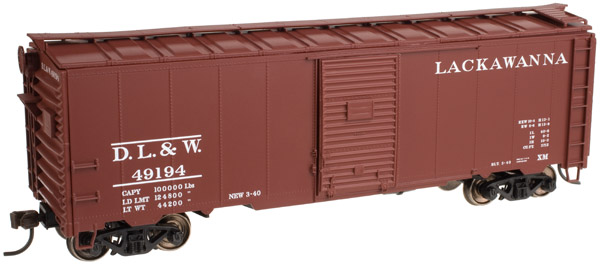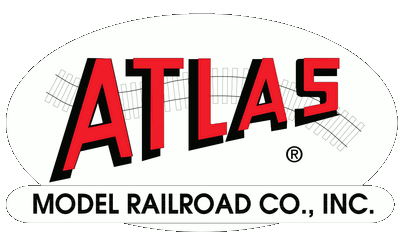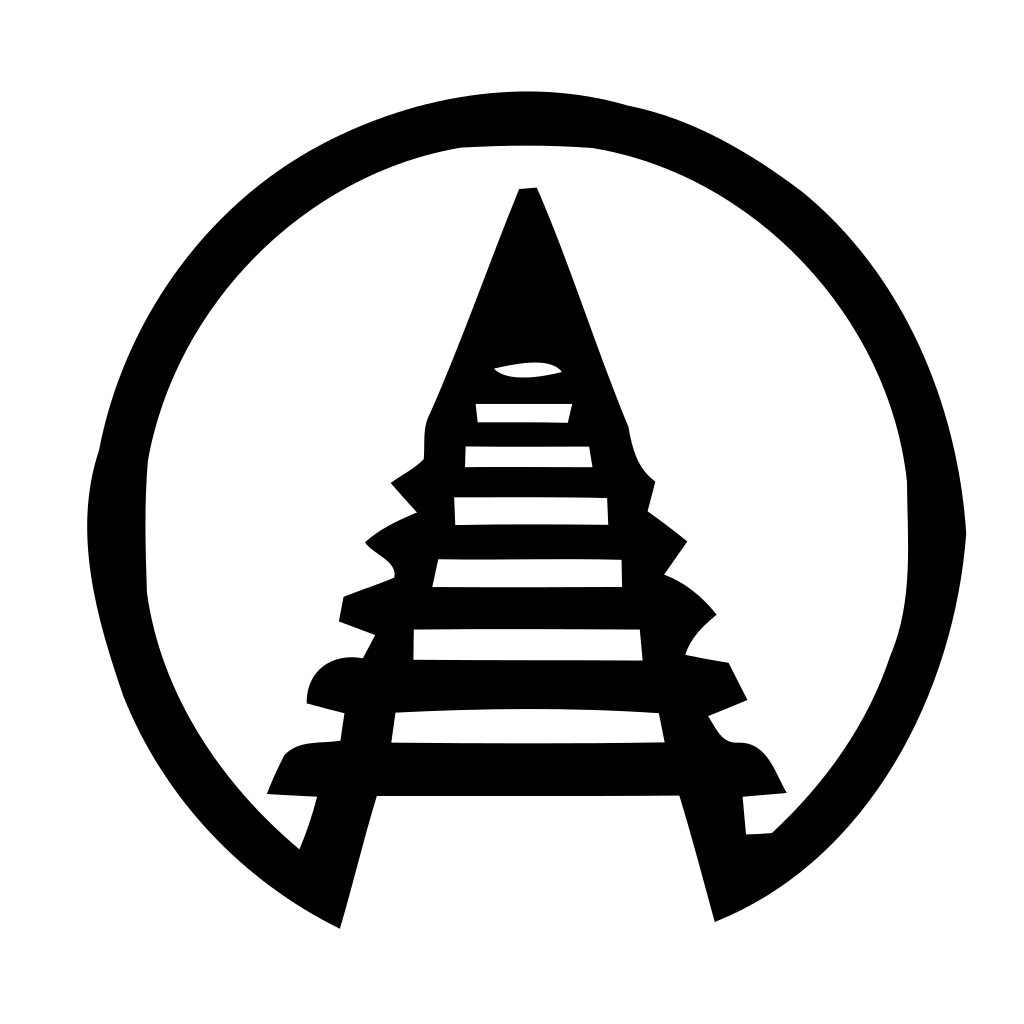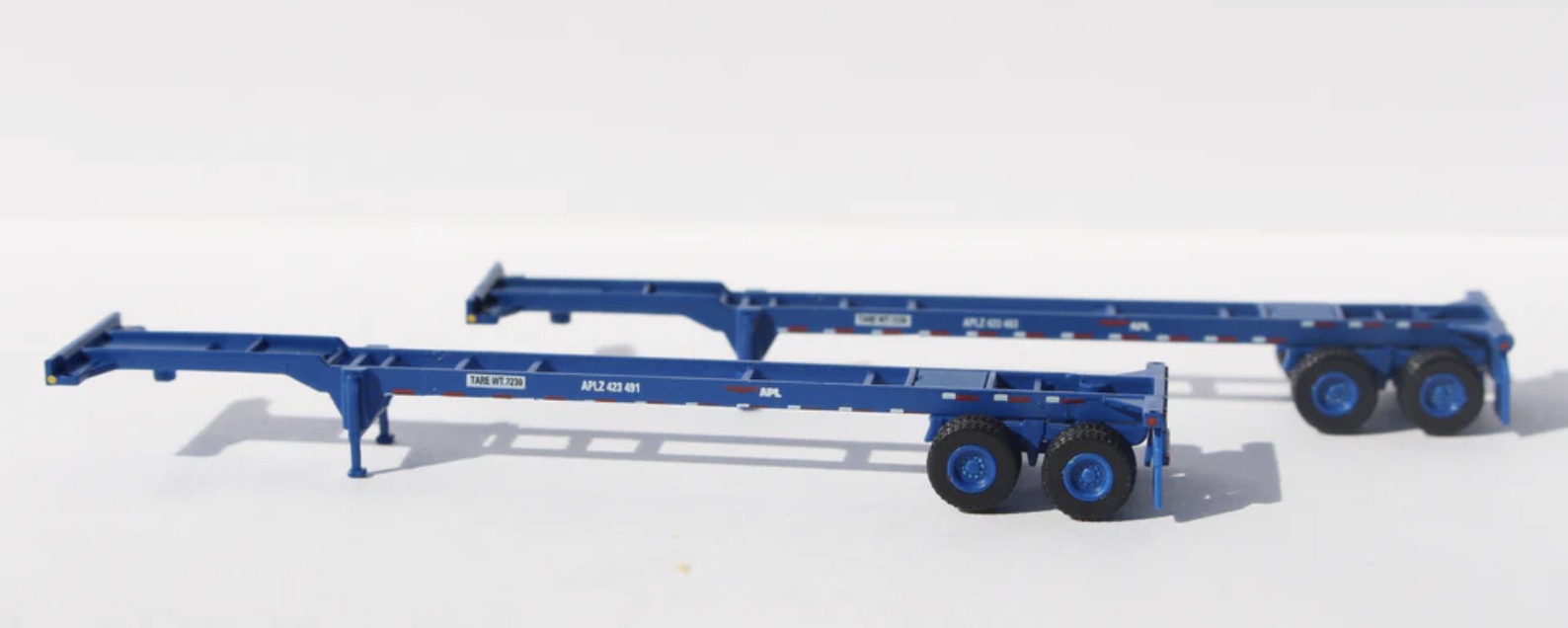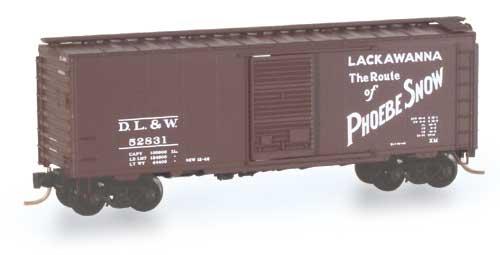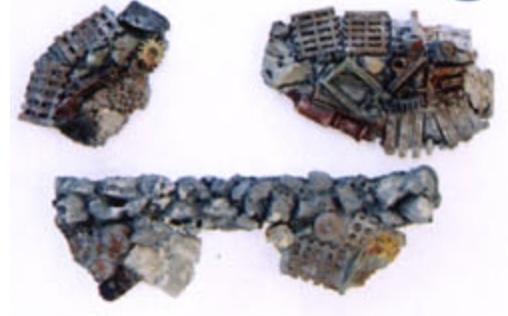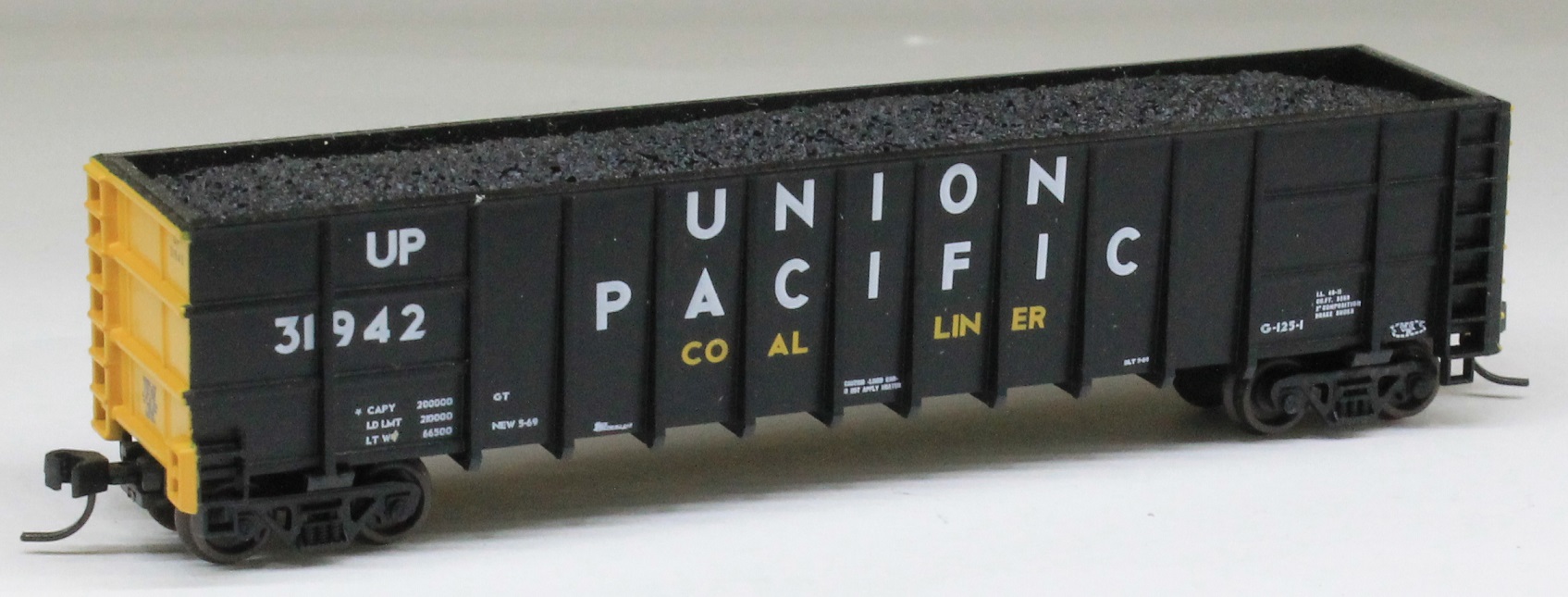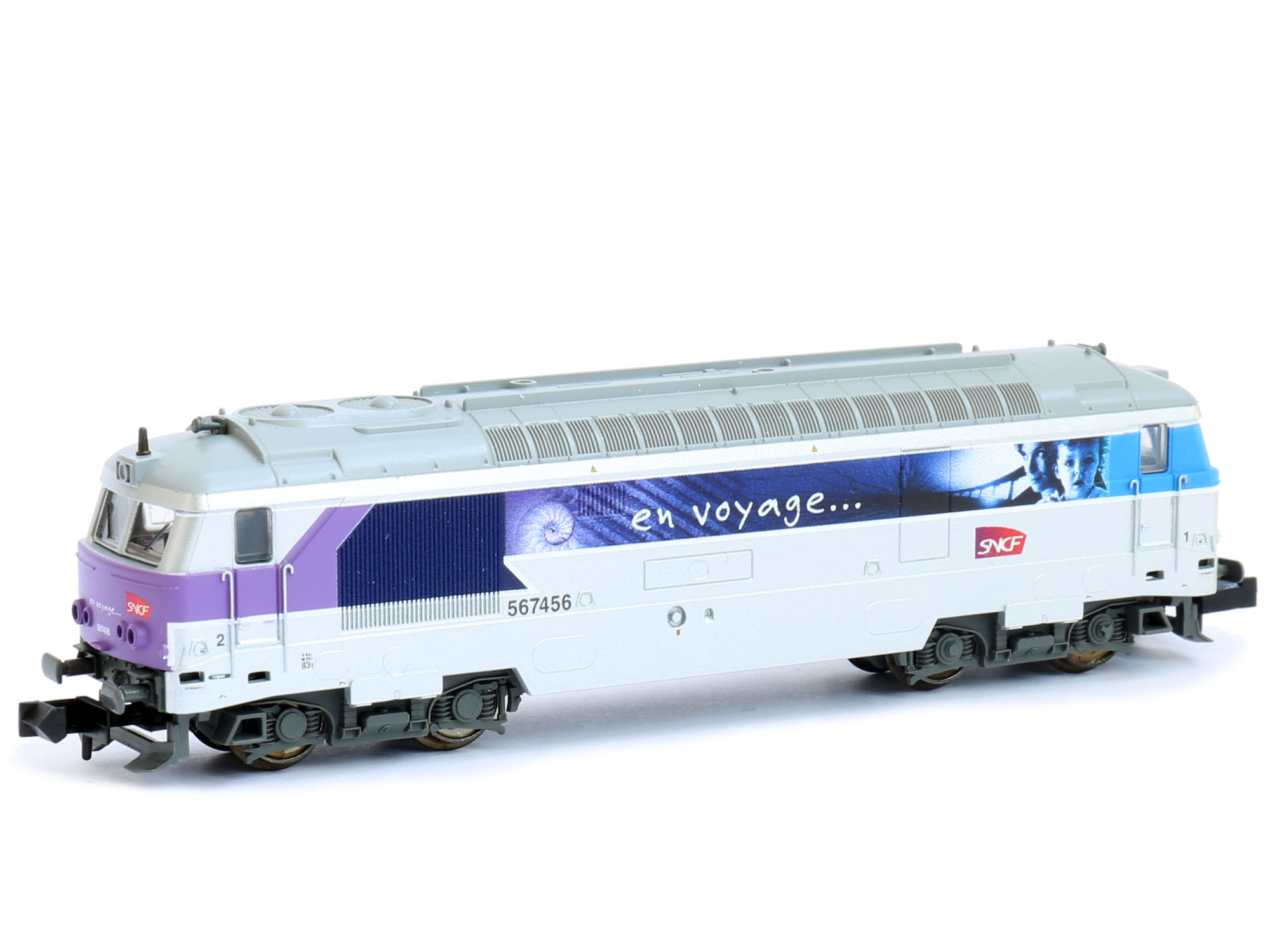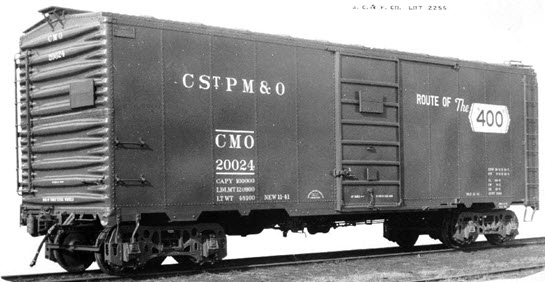Body Style Information: Quick and easy assembly.
Highly detailed body with molded ladders and grab irons.
One-piece underframe with full brake detail.
Quality painting/printing of prototypical paint schemes.
Prototype Information: The Association of American Railroads had been establishing design standards for freight cars since the early part of the century. Each new design standard meant higher capacity, lighter, more durable cars.
The Modified 1937 AAR boxcar design was a result of the industries continued search for more freight volume per carload. The real first attempt at a standardized design had been the 1932 ARA steel boxcar with an inside height of 9'-4" . In 1936 the board of the AAR approved the 1937 AAR design with a 10'-0" inside height. This became a standard throughout the industry.
The Modified 1937 AAR boxcar design was a result of the industries continued search for more freight volume per carload. The real first attempt at a standardized design had been the 1932 ARA steel boxcar with an inside height of 9'-4" . In 1936 the board of the AAR approved the 1937 AAR design with a 10'-0" inside height. This became a standard throughout the industry.
Road/Company Information: 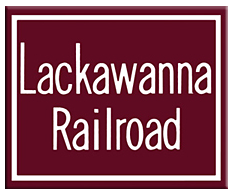 The Delaware, Lackawanna & Western Railroad Company (DL&W or Lackawanna Railroad) was a U.S. Class 1 railroad that connected Buffalo, New York, and Hoboken, New Jersey, a distance of about 400 miles (640 km). Incorporated in 1853, the DL&W was profitable during the first two decades of the twentieth century, but its margins were gradually hurt by declining traffic in coal and competition from trucks. In 1960, the DL&W merged with rival Erie Railroad to form the Erie Lackawanna Railroad.
The Delaware, Lackawanna & Western Railroad Company (DL&W or Lackawanna Railroad) was a U.S. Class 1 railroad that connected Buffalo, New York, and Hoboken, New Jersey, a distance of about 400 miles (640 km). Incorporated in 1853, the DL&W was profitable during the first two decades of the twentieth century, but its margins were gradually hurt by declining traffic in coal and competition from trucks. In 1960, the DL&W merged with rival Erie Railroad to form the Erie Lackawanna Railroad.
The Liggett's Gap Railroad was incorporated on April 7, 1832, but stayed dormant for many years. It was chartered on March 14, 1849, and organized January 2, 1850. On April 14, 1851, its name was changed to the Lackawanna and Western Railroad. The line, running north from Scranton, Pennsylvania, to Great Bend, just south of the New York state line, opened on December 20, 1851. From Great Bend the L&W obtained trackage rights north and west over the New York and Erie Rail Road to Owego, New York, where it leased the Cayuga and Susquehanna Railroad to Ithaca on Cayuga Lake (on April 21, 1855). The C&S was a re-organized and partially re-built Ithaca and Owego Railroad, which had opened on April 1, 1834, and was the oldest part of the DL&W system. The whole system was built to 6 ft (1,829 mm) broad gauge, the same as the New York and Erie, although the original I&O was built to standard gauge and converted to wide gauge when re-built as the C&S.
The Delaware and Cobb's Gap Railroad was chartered December 4, 1850, to build a line from Scranton east to the Delaware River. Before it opened, the Delaware and Cobb's Gap and Lackawanna and Western were consolidated by the Lackawanna Steel Company into one company, the Delaware, Lackawanna and Western Railroad, on March 11, 1853. On the New Jersey side of the Delaware River, the Warren Railroad was chartered February 12, 1851, to continue from the bridge over the river southeast to Hampton on the Central Railroad of New Jersey. That section got its name from Warren County, the county through which it would primarily run.
In the wake of Hurricane Diane in 1955, all signs pointed to continued financial decline and eventual bankruptcy for the DL&W. Among other factors, property taxes in New Jersey were a tremendous financial drain on the Lackawanna and other railroads that ran through the state, a situation that would not be remedied for another two decades.
To save his company, Lackawanna president, Perry Shoemaker, sought and won a merger agreement with the Erie Railroad, the DL&W's longtime rival (and closest geographical competitor). The merger was formally consummated on October 17, 1960. Shoemaker drew much criticism for it, and would even second-guess himself after he had retired from railroading. He later claimed to have had a "gentlemen's agreement" with the E-L board of directors to take over as president of the new railroad. After he was pushed aside in favor of Erie managers, however, he left in disillusionment and became the president of the Central Railroad of New Jersey in 1962.
Read more on Wikipedia.

The Liggett's Gap Railroad was incorporated on April 7, 1832, but stayed dormant for many years. It was chartered on March 14, 1849, and organized January 2, 1850. On April 14, 1851, its name was changed to the Lackawanna and Western Railroad. The line, running north from Scranton, Pennsylvania, to Great Bend, just south of the New York state line, opened on December 20, 1851. From Great Bend the L&W obtained trackage rights north and west over the New York and Erie Rail Road to Owego, New York, where it leased the Cayuga and Susquehanna Railroad to Ithaca on Cayuga Lake (on April 21, 1855). The C&S was a re-organized and partially re-built Ithaca and Owego Railroad, which had opened on April 1, 1834, and was the oldest part of the DL&W system. The whole system was built to 6 ft (1,829 mm) broad gauge, the same as the New York and Erie, although the original I&O was built to standard gauge and converted to wide gauge when re-built as the C&S.
The Delaware and Cobb's Gap Railroad was chartered December 4, 1850, to build a line from Scranton east to the Delaware River. Before it opened, the Delaware and Cobb's Gap and Lackawanna and Western were consolidated by the Lackawanna Steel Company into one company, the Delaware, Lackawanna and Western Railroad, on March 11, 1853. On the New Jersey side of the Delaware River, the Warren Railroad was chartered February 12, 1851, to continue from the bridge over the river southeast to Hampton on the Central Railroad of New Jersey. That section got its name from Warren County, the county through which it would primarily run.
In the wake of Hurricane Diane in 1955, all signs pointed to continued financial decline and eventual bankruptcy for the DL&W. Among other factors, property taxes in New Jersey were a tremendous financial drain on the Lackawanna and other railroads that ran through the state, a situation that would not be remedied for another two decades.
To save his company, Lackawanna president, Perry Shoemaker, sought and won a merger agreement with the Erie Railroad, the DL&W's longtime rival (and closest geographical competitor). The merger was formally consummated on October 17, 1960. Shoemaker drew much criticism for it, and would even second-guess himself after he had retired from railroading. He later claimed to have had a "gentlemen's agreement" with the E-L board of directors to take over as president of the new railroad. After he was pushed aside in favor of Erie managers, however, he left in disillusionment and became the president of the Central Railroad of New Jersey in 1962.
Read more on Wikipedia.
Brand/Importer Information: In 1924 Stephan Schaffan, Sr. founded the Atlas Tool Company in Newark, New Jersey. In 1933 his son, Stephan Schaffan, Jr., came to work for his father at the age of sixteen. Steve Jr. built model airplanes as a hobby and frequented a local hobby shop. Being an enterprising young man, he would often ask the owner if there was anything he could do to earn some extra spending money. Tired of listening to his requests, the hobby-store owner threw some model railroad track parts his way and said, "Here, see if you can improve on this".
Atlas has made a ton of wonderful products throughout the years and we often get questions one whether we have run a certain road name on a particular model. It should be noted that Atlas locomotives and rolling stock are greatly appreciated for their superior operating and running characteristics. Atlas products are also well known for their outstanding collectability not only due to their superior prototypical workmanship, details and decoration, but because there are relatively so few of them made. Each and every production run has been carefully built to market demand, meaning almost every piece in any given run is sold out by Atlas on arrival or shortly thereafter, thus creating a built in collectors market.
Atlas has made a ton of wonderful products throughout the years and we often get questions one whether we have run a certain road name on a particular model. It should be noted that Atlas locomotives and rolling stock are greatly appreciated for their superior operating and running characteristics. Atlas products are also well known for their outstanding collectability not only due to their superior prototypical workmanship, details and decoration, but because there are relatively so few of them made. Each and every production run has been carefully built to market demand, meaning almost every piece in any given run is sold out by Atlas on arrival or shortly thereafter, thus creating a built in collectors market.
Item created by: devsummers428 on 2019-11-20 23:50:44
If you see errors or missing data in this entry, please feel free to log in and edit it. Anyone with a Gmail account can log in instantly.
If you see errors or missing data in this entry, please feel free to log in and edit it. Anyone with a Gmail account can log in instantly.


